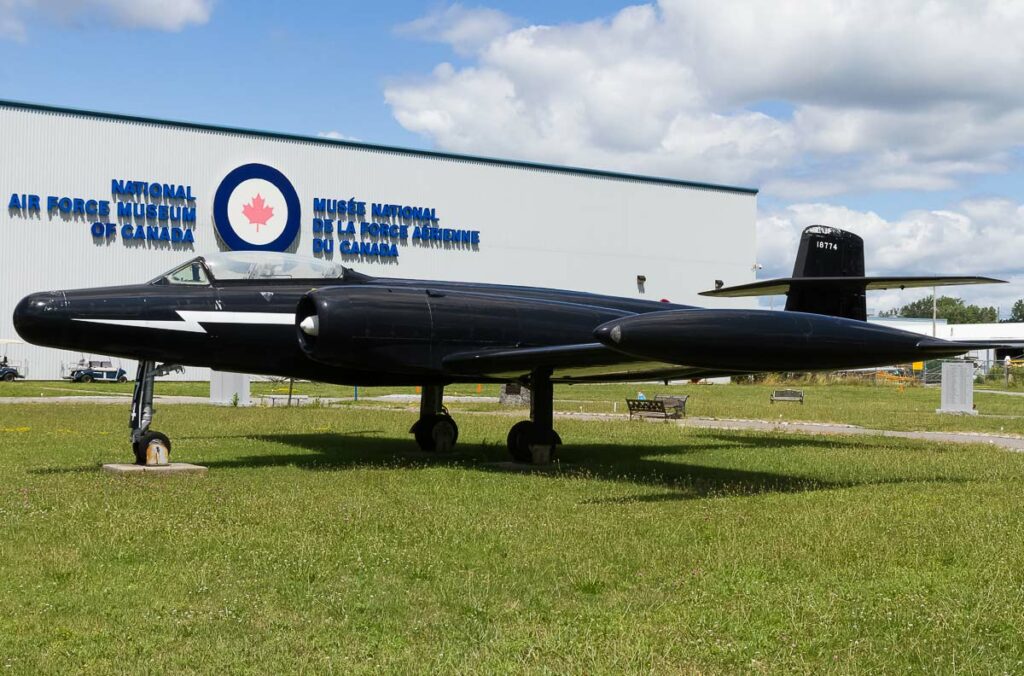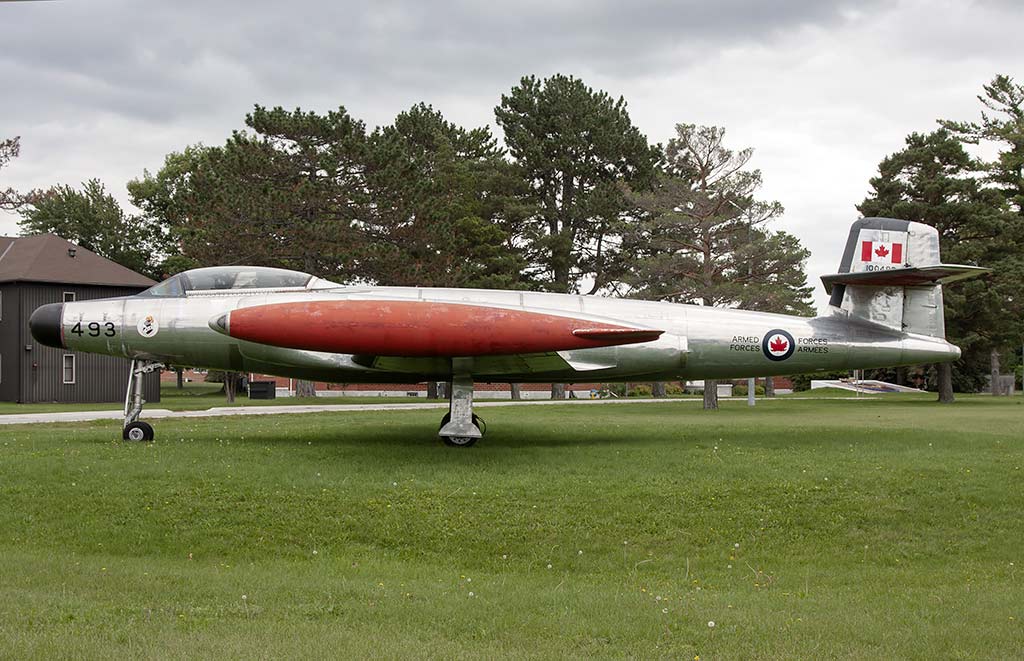The CF-100 Canuck, a Canadian-built all-weather interceptor, was known for its durability and effectiveness in northern climates.
In Brief
The Avro Canada CF-100 Canuck, fondly known as the “Clunk,” was a significant milestone in Canadian aerospace history. Developed in the late 1940s and early 1950s, it was Canada’s first indigenous jet fighter. Designed primarily as an all-weather interceptor, the CF-100 played a critical role in North American air defense during the Cold War. It was equipped with two Avro Orenda turbojet engines, providing respectable speed and altitude capabilities. Notable for its ruggedness and reliability, especially in harsh weather conditions, the CF-100 served primarily with the Royal Canadian Air Force and also saw service with the Belgian Air Force. Its role as a reliable all-weather interceptor during a period of intense aerial defense development highlights its importance in the annals of military aviation.
The Avro Canada CF-100 Canuck represents a pivotal era in jet interceptor development, emphasizing all-weather capabilities and reliability.

History of the Development of the Avro Canada CF-100 Canuck
In the context of the emerging Cold War tensions, Canada recognized the need for a robust all-weather interceptor to defend its vast airspace, especially in the north. The development of the CF-100 Canuck was initiated by Avro Canada as an answer to this requirement.
The program was launched in the late 1940s, aiming to provide the Royal Canadian Air Force (RCAF) with a jet capable of operating in diverse and challenging climates. The first flight occurred on January 19, 1950, marking a significant milestone in Canadian aviation history.
The CF-100, although not formally assigned a NATO nickname, was colloquially known as the “Clunk,” a reference to the unique sound of its landing gear retracting.
Design of the Avro Canada CF-100 Canuck
The CF-100’s design was focused on durability, all-weather capability, and ease of maintenance. It featured a straight wing design, which, while limiting its top speed compared to swept-wing designs, provided excellent stability and control, especially at lower speeds and altitudes necessary for interception missions.
The aircraft was powered by two Avro Orenda engines, each producing approximately 6,500 pounds of thrust. Its dimensions included a length of 17.37 meters (57 feet) and a wingspan of 17.37 meters (57 feet), with a robust airframe suitable for harsh operational environments.
One of the major advantages of the CF-100 was its advanced radar and fire-control system, which allowed it to operate effectively in all weather conditions. However, the straight-wing design limited its maximum speed and altitude compared to contemporary swept-wing interceptors.
Performance of the Avro Canada CF-100 Canuck
The CF-100 Canuck’s performance was tailored to its role as an all-weather interceptor. It could reach a top speed of about 888 km/h (552 mph) and had a service ceiling of 13,716 meters (45,000 feet). Its range was approximately 3,219 kilometers (2,000 miles) with external fuel tanks.
Compared to contemporaries like the American F-86 Sabre, the CF-100 was slower but offered superior performance in adverse weather conditions and was more versatile in a variety of roles.

Military Use and Combat of the Avro Canada CF-100 Canuck
The CF-100 was armed with eight 0.50-inch Browning machine guns and could carry rockets and bombs. Its primary role was as an interceptor, defending Canadian and North American airspace during the Cold War.
The aircraft saw service in the Royal Canadian Air Force and the Belgian Air Force but did not participate in any major conflicts. Its main role was in air defense, particularly in the interception of Soviet bombers had a conflict arisen.
The CF-100 was eventually replaced by more advanced aircraft like the McDonnell Douglas CF-101 Voodoo and the CF-104 Starfighter in Canadian service.
The Avro Canada CF-100 Canuck stands as a testament to Canadian innovation in the field of military aviation. It was a critical component of North American air defense during the Cold War, renowned for its all-weather capabilities and reliability. The CF-100’s legacy lies in its role as Canada’s first indigenous jet fighter and its contribution to the evolution of all-weather interception tactics and technology.